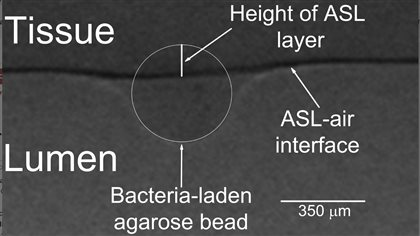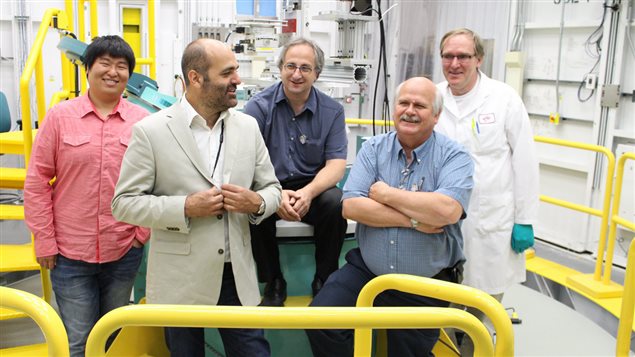A University of Saskatchewan team has made an important discovery in the understanding and eventual treatment of Cystic Fibrosis.
Their research was published in the recognized scientific journal, Proceedings of the National Academy of Sciences.
Professor Juan Ianowski (PhD) led the research. He is an assistant professor in the College of Medicine
ListenCystic fibrosis attacks the lungs and digestive system, and is the most common fatal genetic disease affecting Canadian children and young adults. There is no cure.

The underlying cause is a genetic mutation which hinders the body’s normal ability to fight off infections in the lungs.
A specialist in airway passages, Professor Ianowski along with his team, was able to prove the hypothesis that immune response to inhaled bacteria requires functional CFTR. In cystic fibrosis this protein is mutated and the immune response to bacteria fails
They were able to study this thanks to the extreme precision of the sophisticated technology available at the University of Saskatchewan synchrotron, (Canadian Light Source) particularly the BioMedical Imaging and Therapy Beamline (BMIT)
In the lungs an extremely thin layer of anti-microbial fluid protects the body from the myriad amounts of bacteria, fungi and other irritants that we inhale daily.
Normally when bacteria are encountered in the lungs, the epithelium lining the airways increases the thickness and amount of this fluid which captures and kills infectious bacteria or fungi or other irritants and then cillia (tiny hairs) move the captured bacteria up and out of the body.
In CF patients, Professor Ianowski was able to prove that due to the lack of functional CFTR, this fluid layer had no or insufficient reaction to infection.
This meant constant irritation of the lining of the lungs by these infections. This constant irritation would in turn eventually form scar tissue and other damage in the lining and airways reducing their function. It also results in a build-up of a thick mucous layer.
Professor Ianowski says this new knowledge of the workings of the CFTR and theses new techniques they’ve developed to study and verify reactions, will lead to greatly improved ability to clinically test new treatments for their effectiveness in treating this debilitating and ultimately fatal disease.
Funding for this research was provided by Cystic Fibrosis Canada.
Other important members of the research were Veronica Campanucci (PhD) of the University of Saskatchewan Physiology Department, and Biologist Terry Machen (PhD) at the University of California, Berkeley







For reasons beyond our control, and for an undetermined period of time, our comment section is now closed. However, our social networks remain open to your contributions.